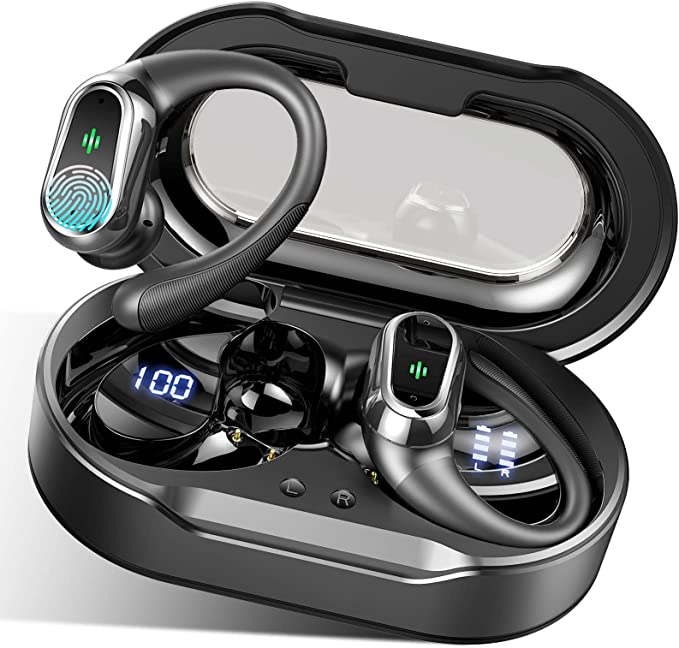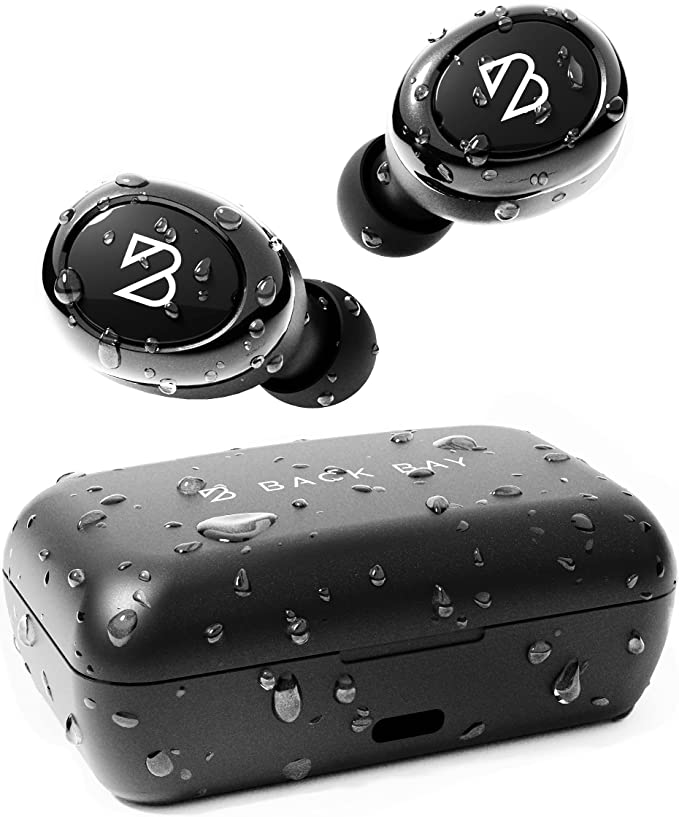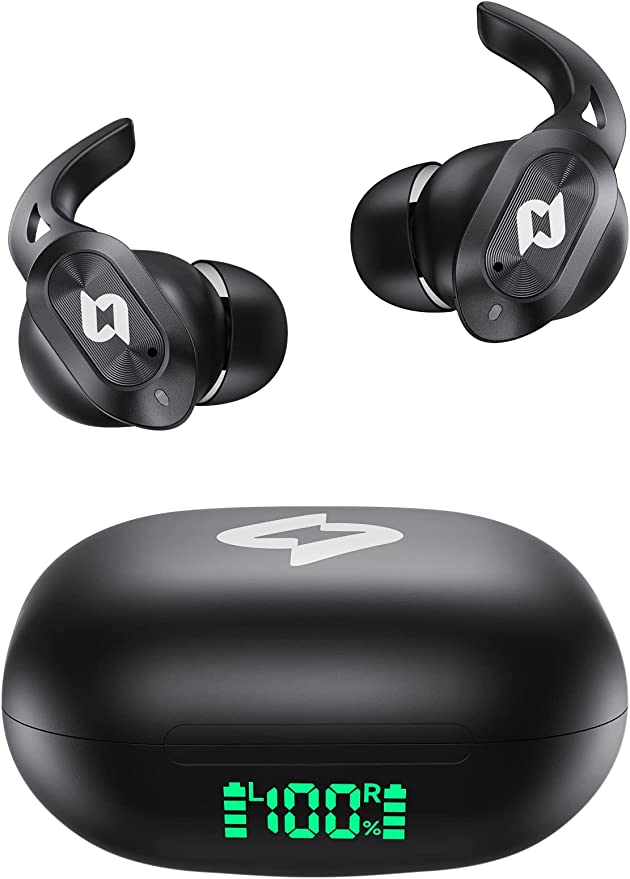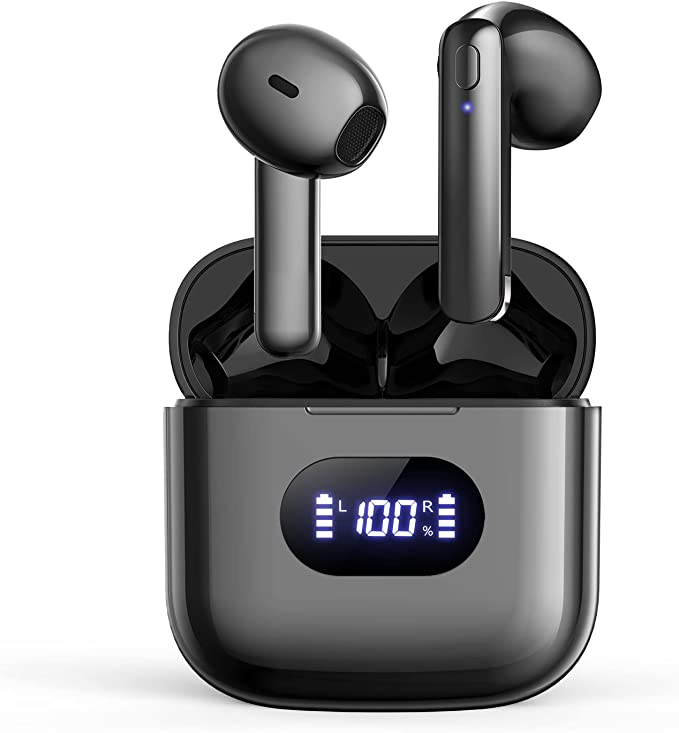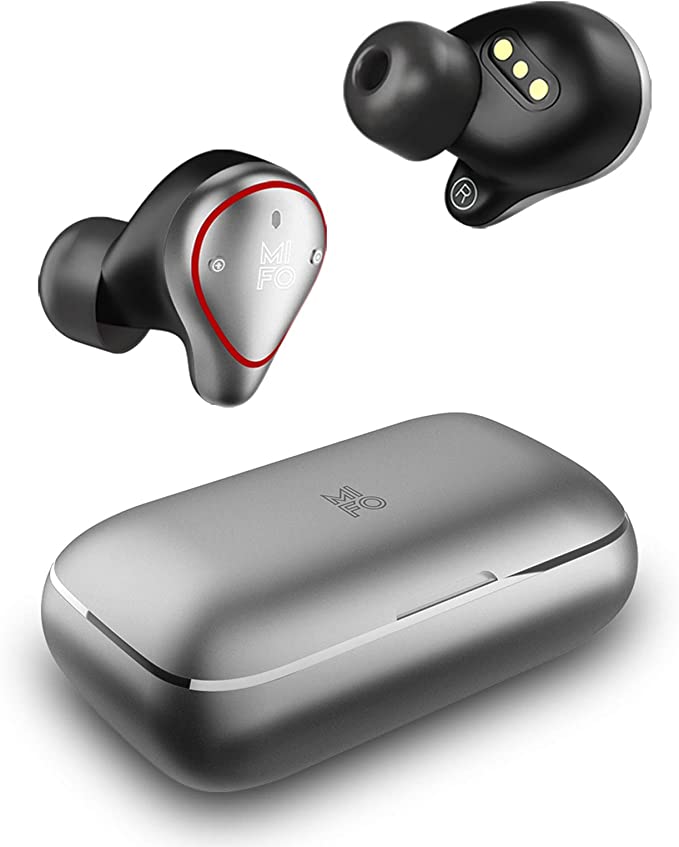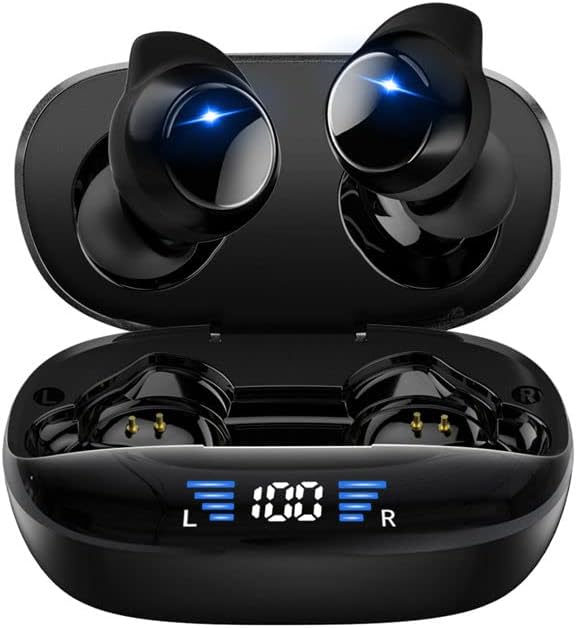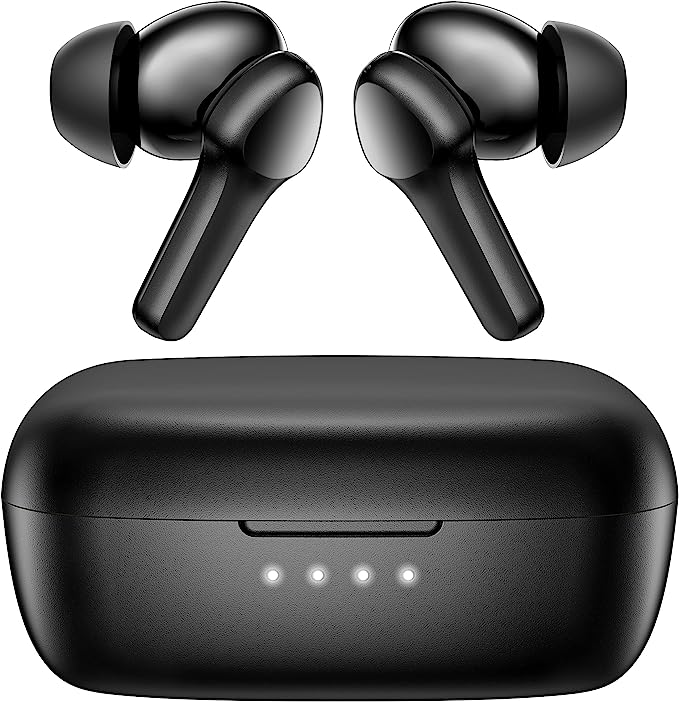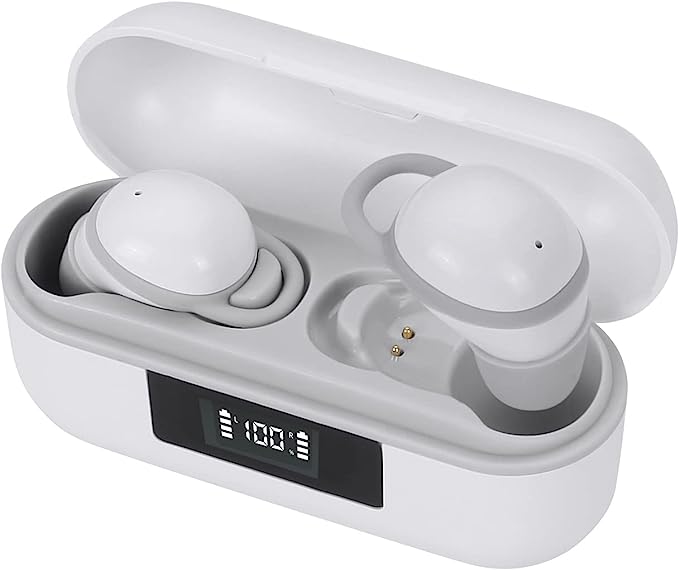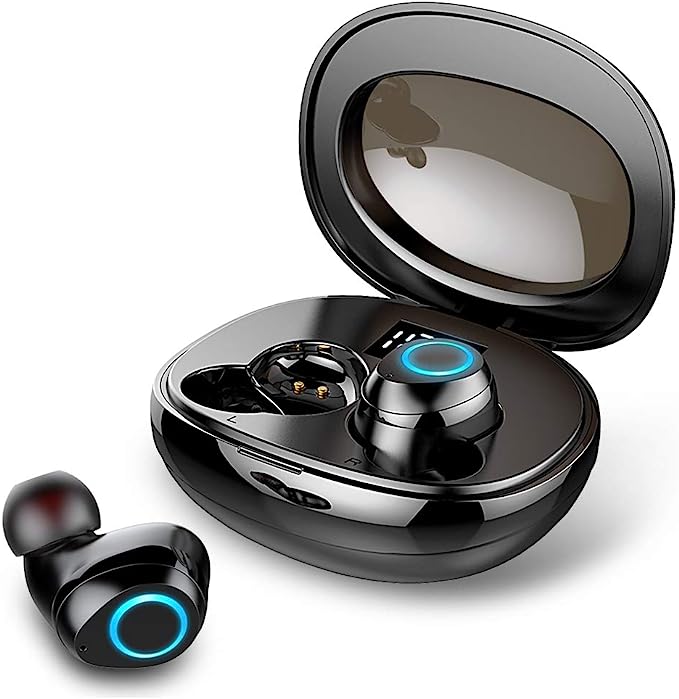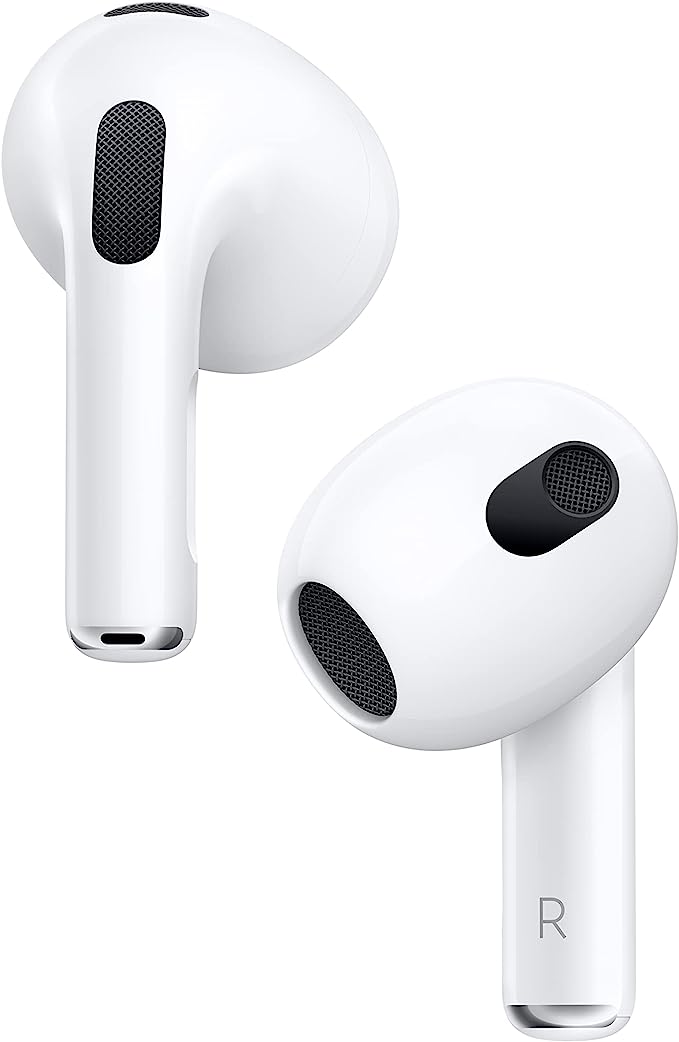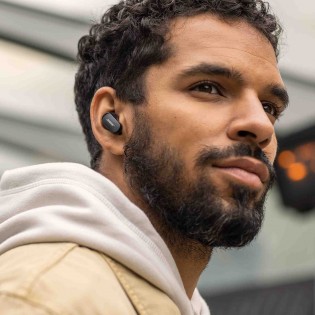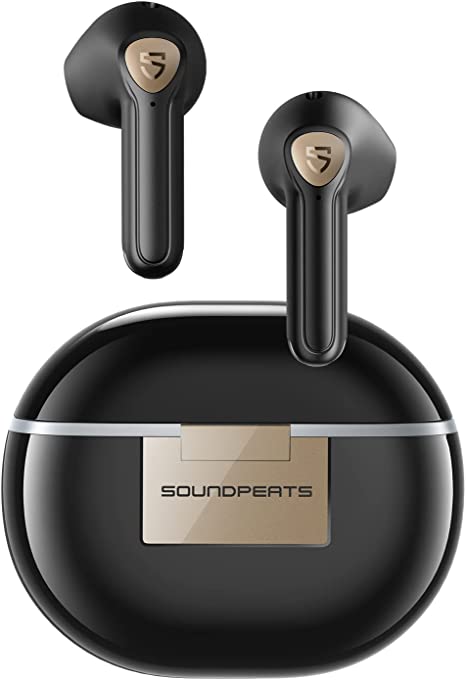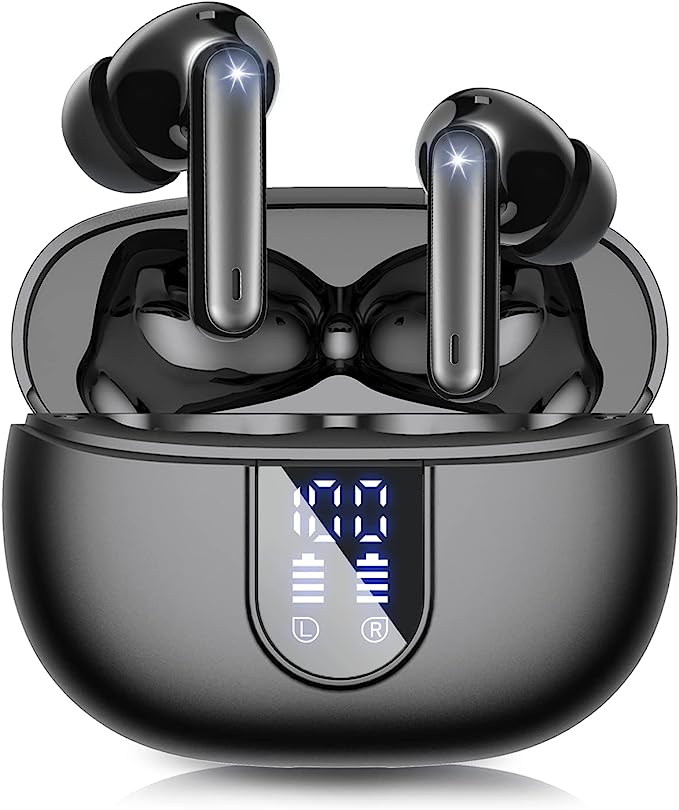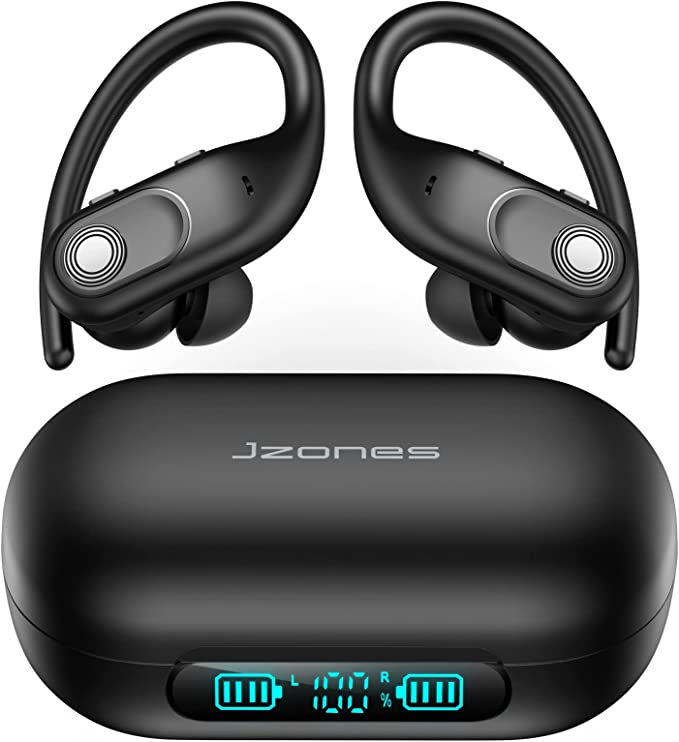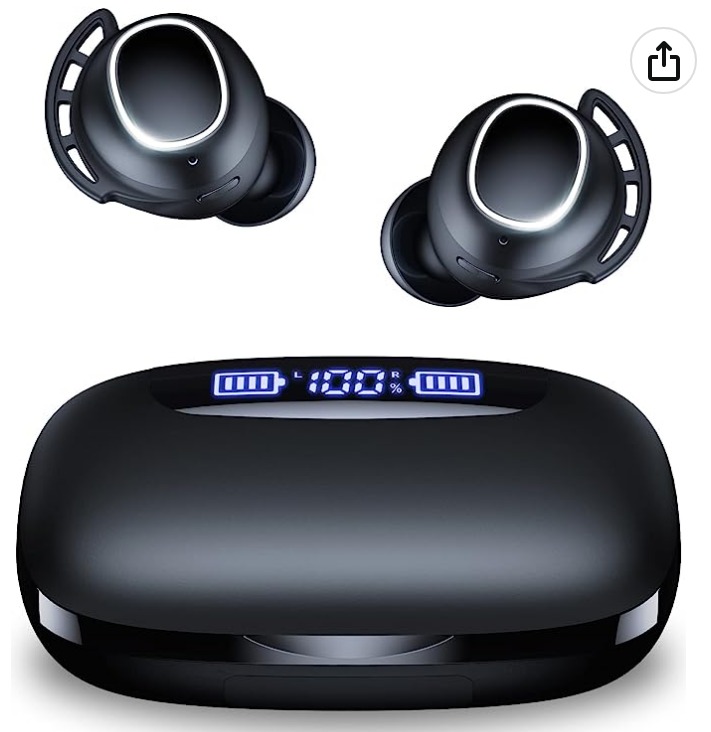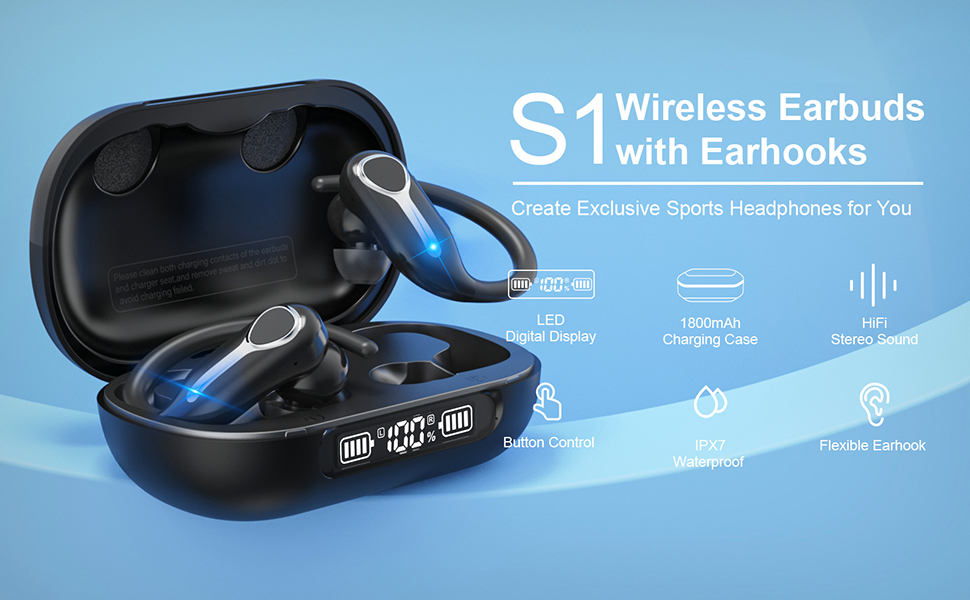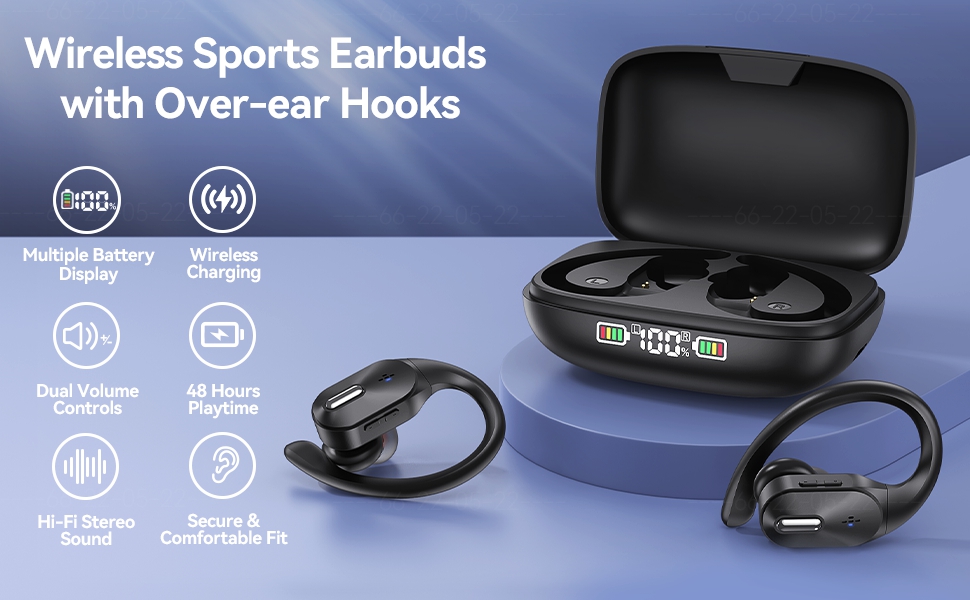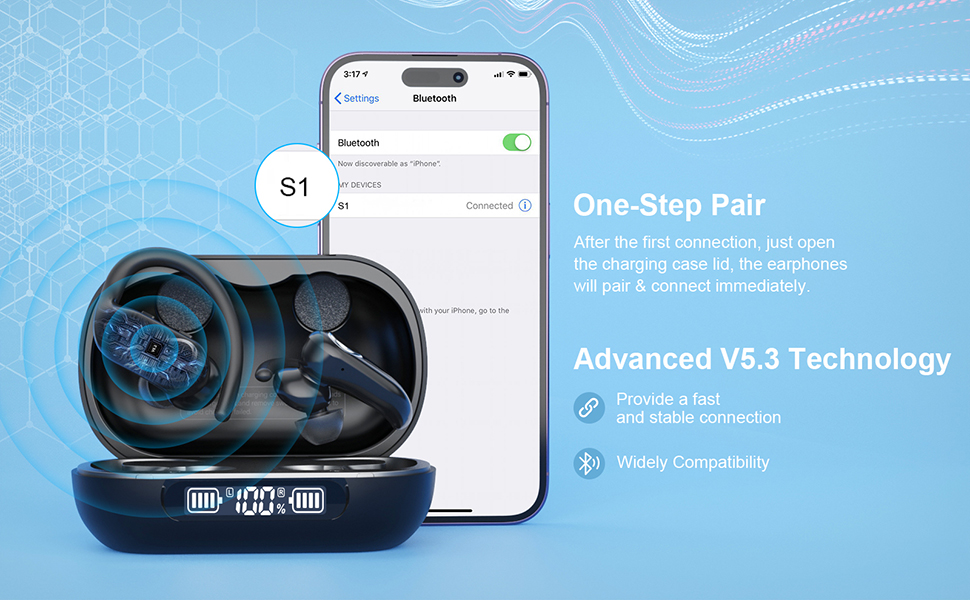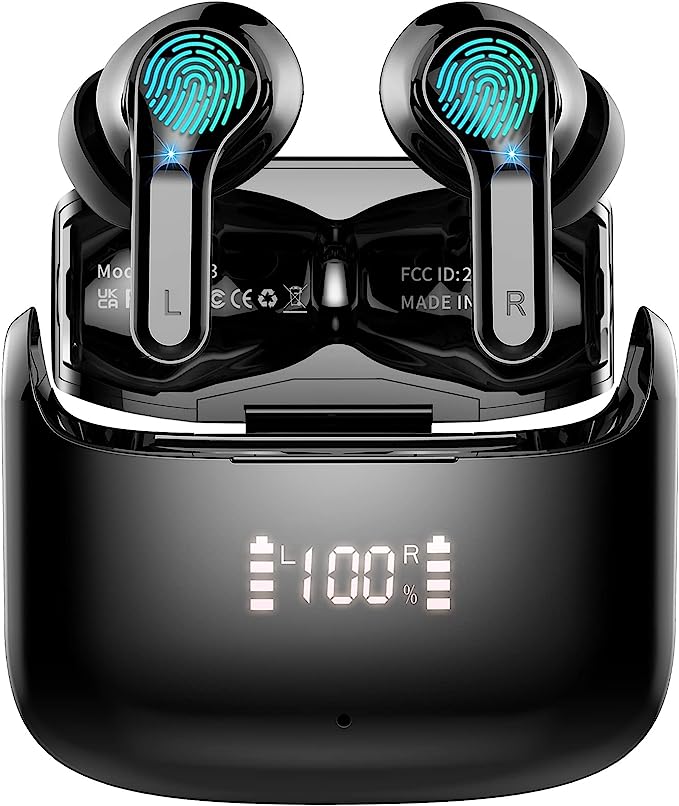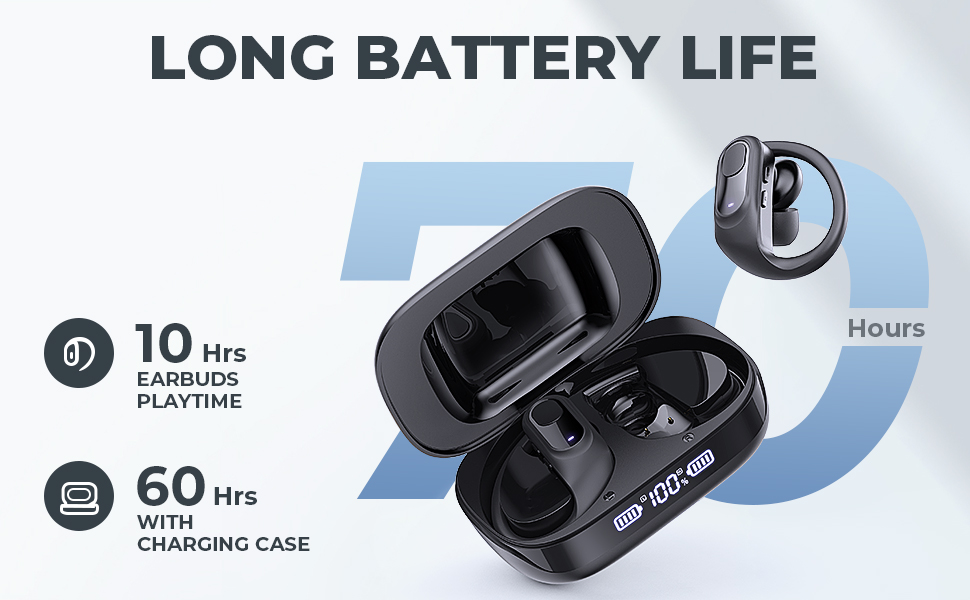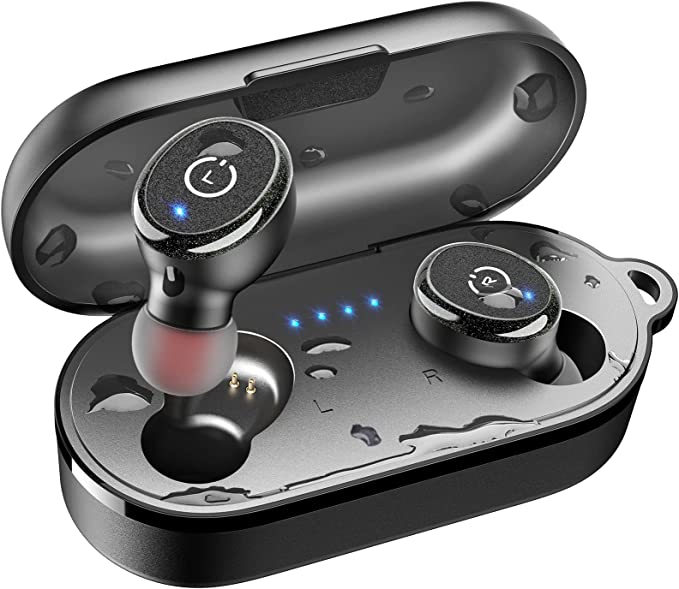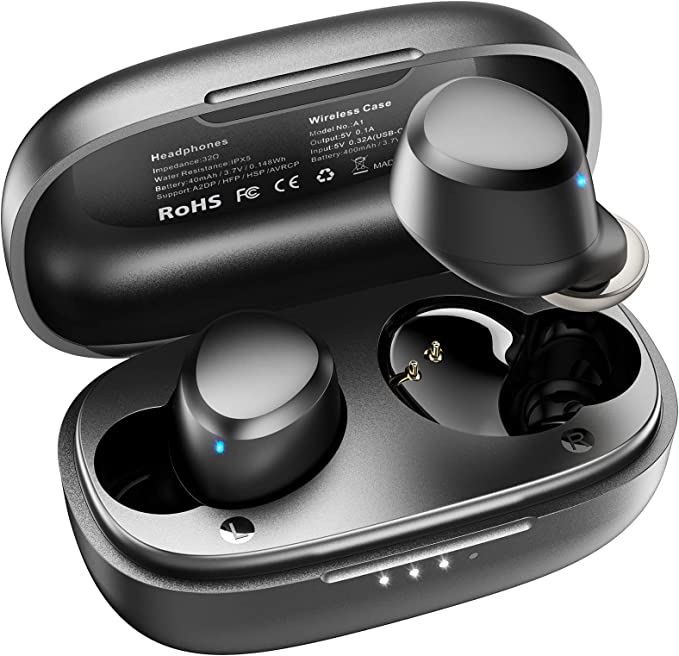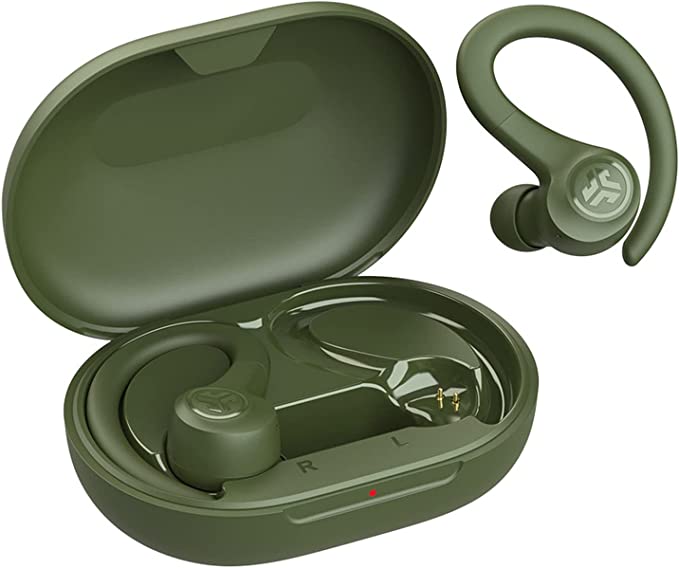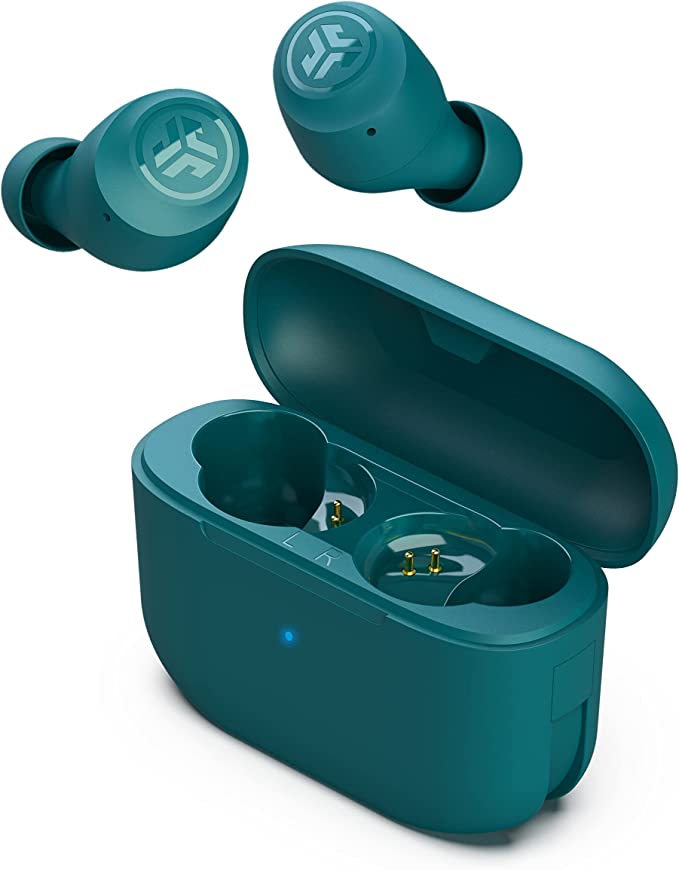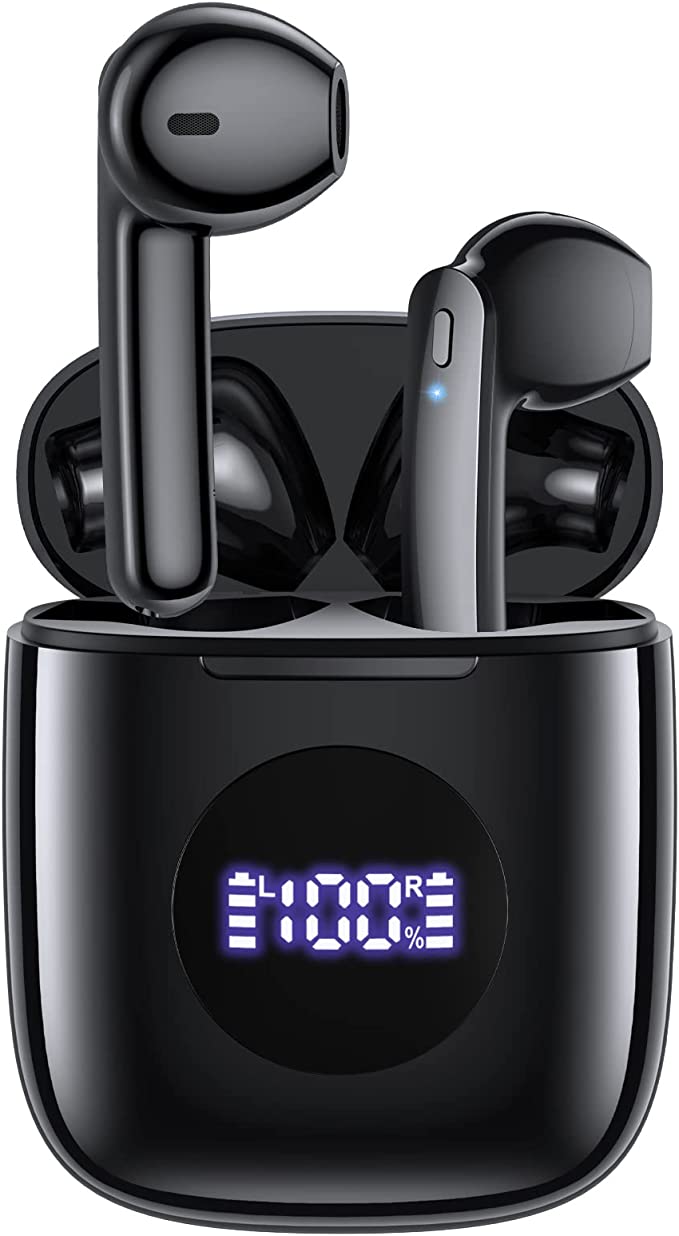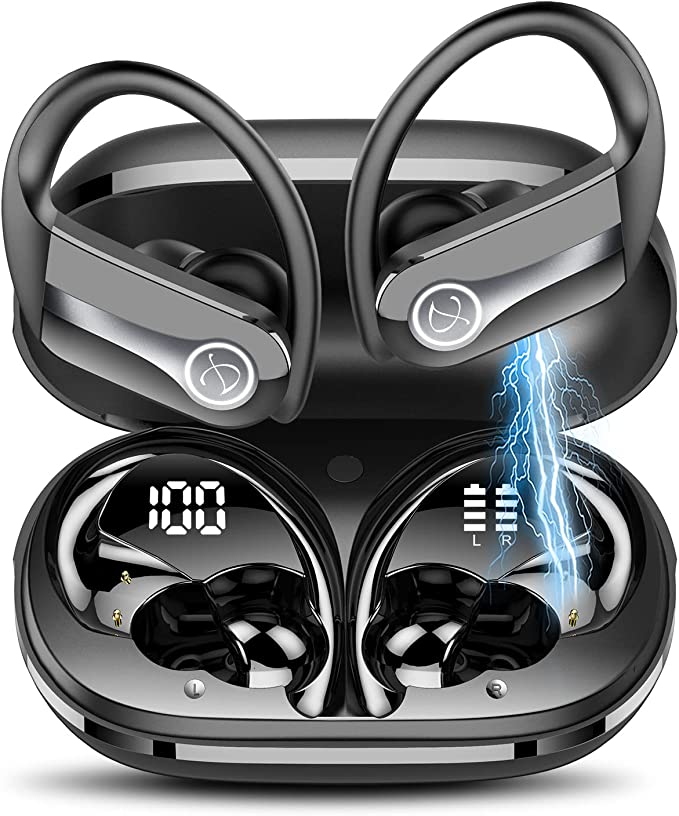Back Bay Audio Tempo 30: The Science of Sound & Secure Fit in Compact Wireless Earbuds
Update on April 26, 2025, 3:30 a.m.
We live in an era seemingly populated by tiny, plastic emissaries whispering music, podcasts, and conversations directly into our minds. Wireless earbuds have become nearly ubiquitous, sleek little packages promising auditory freedom. Yet, beneath their unassuming shells lies a fascinating convergence of sophisticated science and intricate engineering. The quest for the “perfect” pair often feels personal and elusive – we crave immersive sound, comfort that lasts for hours, and the resilience to keep up with our dynamic lives. But what truly separates one pair from another?
Let’s embark on a journey beyond the surface, using the Back Bay Audio Tempo 30 earbuds not as a product to be reviewed, but as a tangible case study. Guided by the principles of audio engineering and human ergonomics, we’ll unpack the science that tackles the universal challenges faced in designing these miniature technological marvels. Join me as we explore the unseen symphony of physics, materials science, and digital processing that powers your personal soundscape.

The Intimate Interface: Engineering for the Human Ear
Perhaps the most immediate, and often frustrating, challenge in earbud design is the sheer diversity of human anatomy. Our ears, particularly the ear canals, are as unique as fingerprints. This presents a significant ergonomic riddle: how do you create a device meant for mass consumption that fits comfortably and securely in millions of differently shaped conduits? The “one-size-fits-all” philosophy, common in less considered designs, often leads to discomfort, instability (the dreaded earbud tumble during a jog), and, crucially, compromised audio quality.
Why is the fit so critical? From an acoustical standpoint, achieving a proper seal between the eartip and the ear canal is paramount. Think of it like ensuring a door is properly closed to keep noise out and warmth in. This seal performs two vital functions. Firstly, it creates passive noise isolation, physically blocking a significant amount of ambient sound from reaching your eardrum, allowing you to focus on your audio without needing excessive volume. Secondly, and especially important for rich sound, it forms a closed acoustic chamber necessary for accurately reproducing low frequencies – the bass. Without a good seal, bass frequencies leak out, leaving the music sounding thin and tinny.
Recognizing this fundamental requirement, the Back Bay Tempo 30 directly addresses the fit challenge by including a generous array of six distinct sizes of silicone eartips, reportedly ranging from Extra-Small to XXL. This isn’t just a minor accessory; it’s a nod to ergonomic reality. Providing multiple sizes significantly increases the probability that a user can find a tip that creates that essential secure, comfortable seal. It’s the difference between wearing an off-the-rack garment and one that feels almost custom-tailored. Complementing the tips, the manufacturer describes the earbuds and their case as “tiny.” This compact form factor aims to minimize pressure on the outer ear (the concha), further enhancing comfort, particularly for individuals with smaller ears who might find bulkier designs cumbersome or painful over extended periods.
The payoff for achieving this correct fit is multifaceted: the earbuds stay put, whether you’re commuting or exercising; long listening sessions become a pleasure, not an endurance test; and the stage is set for the earbuds to deliver their full sonic potential.

Sculpting Sound Waves: The Art and Science of Audio
Once comfortably seated, an earbud’s primary mission is to reproduce sound faithfully and enjoyably. This involves transforming electrical signals back into physical sound waves – a task performed by miniature speaker drivers packed into the earbud housing. It’s a significant engineering feat to coax high-fidelity audio from such small components.
Sound itself is characterized by different frequencies, measured in Hertz (Hz). Low frequencies give us the rumble and punch of bass, mid-frequencies carry the core of vocals and most instruments, and high frequencies provide clarity, sparkle, and detail (like cymbal crashes). The challenge for audio engineers is not only to reproduce these frequencies accurately but also to tailor the sound profile, or “tuning,” to suit different listener preferences or use cases.
The Tempo 30 offers users a choice in this regard, featuring what Back Bay calls its “Signature Sound” alongside a switchable “Extra Bass Mode.” The Signature profile likely aims for a relatively balanced representation across the frequency spectrum, perhaps adhering to a popular target response curve favored by many listeners for general music enjoyment.
The “Extra Bass Mode,” as the name suggests, is designed to emphasize the low end. According to the product description, activating this mode “cranks the bass loud.” How is this likely achieved? In modern digital earbuds, this typically involves Digital Signal Processing (DSP). The onboard chip selectively amplifies signals within specific low-frequency bands. Imagine a graphic equalizer on a stereo system, but miniaturized and automated.
The description also makes a noteworthy claim: that this bass boost is achieved “while preventing any distortion.” This is a desirable but challenging goal. Simply amplifying bass signals can easily overload the miniature driver or the internal amplifier, leading to unpleasant clipping or distortion artifacts. Sophisticated DSP algorithms can employ techniques like dynamic range compression or adaptive equalization to manage the increased bass levels, attempting to maximize impact without sacrificing overall clarity. It’s akin to a skilled audio engineer carefully pushing the limits of equipment without letting it break into harsh noise. While “no distortion” is an ideal, real-world performance depends heavily on the quality of the DSP implementation and the physical limitations of the drivers. Having the option, however, empowers the listener – perhaps choosing the Signature sound for critical listening or podcasts, and engaging the Bass Boost for that extra motivational thump during a workout playlist. It’s like an artist having both fine brushes for detail and broader strokes for impact.
Braving the Elements: The Meaning Behind the Rating
Our gadgets follow us everywhere, through workouts dripping with sweat, commutes caught in downpours, and dusty trails. Protecting the delicate electronics inside from these environmental hazards is non-negotiable for any device meant for an active lifestyle. This is where the Ingress Protection (IP) rating system comes in, providing a standardized way to measure resistance.
The Back Bay Tempo 30 carries an IPX7 rating. Let’s decode this alphanumeric designation, which is governed by the International Electrotechnical Commission’s standard IEC 60529. The ‘IP’ simply stands for Ingress Protection. The first digit (replaced by ‘X’ here) indicates protection against solid particles (like dust); an ‘X’ means the device hasn’t been specifically tested or rated for dust ingress. The second digit, the ‘7’, is crucial – it denotes protection against liquid ingress.
Specifically, a ‘7’ rating signifies that the device can withstand immersion in water up to 1 meter (about 3.3 feet) deep for a duration of 30 minutes under controlled laboratory conditions. This level of protection provides significant peace of mind for everyday use. It means the Tempo 30 earbuds are designed to be fully sweatproof, capable of handling intense workouts without issue. They can also survive being used during runs in the rain or snow, as the manufacturer suggests.
However, understanding the rating’s boundaries is just as important as knowing its capabilities. The manufacturer explicitly states these are not swimming earbuds. Why? The IPX7 test involves static immersion. The dynamic pressures encountered during swimming, diving, or even strong water jets (like a shower) can exceed the conditions the rating guarantees against. Furthermore, maintaining a secure fit and seal while submerged is another challenge entirely. So, while IPX7 offers robust protection against common moisture exposure, it’s wise to respect its limitations to ensure the longevity of the device. Think of it as a high-quality raincoat – excellent for storms, but not intended for scuba diving.

The Power Equation: Untethered Listening
The allure of wireless earbuds lies in their freedom, but that freedom is directly tied to their power source. The unsung hero here is the Lithium-Ion (Li-ion) battery, a marvel of electrochemistry that packs substantial energy into a very small and lightweight package. This high energy density is what makes portable devices like earbuds, smartphones, and laptops feasible.
Engineers face a constant balancing act: maximizing battery life while keeping the earbuds small, light, and comfortable. The Tempo 30 tackles this by employing a common and effective strategy: distributing the power reserves. The earbuds themselves are claimed to hold enough charge for 8 hours of continuous playtime. This is a respectable duration, sufficient for long commutes, extended workouts, or a good portion of a workday.
But the ecosystem extends beyond the buds themselves. The included charging case acts as a mobile power bank. According to the specifications, it stores an additional 24 hours of charge, bringing the total potential listening time up to an impressive 32 hours before the case itself needs replenishing. For the user, this translates to potentially days of typical use without needing to hunt for a power outlet. The case essentially serves as a lifeline, ensuring your earbuds are ready to go when you are. Imagine the earbuds having their own fuel tank, and the case being a portable jerry can for on-the-go refueling. The system utilizes a USB-C port for charging the case, aligning with the modern standard that offers reversible plug orientation and often supports faster charging protocols compared to older micro-USB connectors. The specified 2.5-hour charging time for the case itself seems reasonable for replenishing the entire system’s power reserve.

The Invisible Thread: Wireless Freedom and Flaws
That seamless audio experience, free from tangled wires, is delivered via Bluetooth, a short-range wireless technology standard that uses radio waves in the 2.4 GHz spectrum to transmit data, including compressed audio streams. While it offers incredible convenience, engineers continually work to optimize its performance, particularly regarding connection stability, call clarity, and latency.
Clear communication is a key function for many earbud users. The Tempo 30 incorporates dual microphones. Why two, instead of just one? Utilizing multiple microphones allows the earbud’s internal processor to employ sophisticated noise reduction techniques. By comparing the audio signals received by each mic, algorithms can better differentiate the user’s voice (which should arrive at both mics relatively similarly and potentially earlier) from ambient background noise (which might arrive differently or be more diffuse). This could involve concepts like beamforming, where the system digitally “focuses” on the voice source, or environmental noise cancellation (ENC), which actively subtracts predictable background sounds. The goal is to make your voice stand out clearly to the person on the other end of the call or participants in a video conference, even in noisy environments.
Another common pain point with wireless audio is latency – the slight delay between when a sound is generated by the source device (like your phone) and when it’s actually heard through the earbuds. While often negligible for music listening, this delay can become jarringly noticeable when watching videos or playing games, resulting in dialogue being out of sync with actors’ lip movements (poor lip-sync). The Tempo 30 addresses this with a feature called “Movie Mode,” which claims to ensure “zero lag.” Technically, achieving true zero latency is virtually impossible in a digital wireless system. However, “Movie Mode” likely activates specific low-latency Bluetooth audio codecs (if supported by both the earbuds and the source device) or employs optimized buffering strategies within the earbuds to significantly reduce the delay, bringing it down to a level where it becomes imperceptible for most users during video playback or casual gaming. It’s about minimizing that gap between seeing and hearing, making the multimedia experience feel more natural and synchronized – like ensuring the sound of a drumbeat perfectly matches the sight of the stick hitting the drum.

Conclusion: Appreciating the Engineered Experience
From the precise fit required by our unique ears to the complex dance of digital signals managing sound and power, the journey of audio from source to eardrum via wireless earbuds is a testament to multidisciplinary engineering. The Back Bay Tempo 30, as we’ve explored, serves as a microcosm of this field, integrating principles of ergonomics, acoustics, materials science, battery technology, and wireless communications to address specific user needs and overcome inherent technical hurdles.
The provision of multiple eartip sizes acknowledges anatomical reality. The switchable sound profiles cater to subjective preference through applied acoustics and DSP. The IPX7 rating offers tangible durability based on standardized testing. The combination of earbud and case battery life reflects smart power management strategies. And features like dual microphones and low-latency modes demonstrate ongoing efforts to refine the wireless experience.
Looking beyond the marketing points and specification sheets allows us to appreciate the intricate science woven into the fabric of these everyday devices. Understanding why a feature exists, how it works (at least conceptually), and what its limitations might be, empowers us not only to make more informed choices as consumers but also to cultivate a deeper appreciation for the innovation we often take for granted. The quest for the perfect personal audio experience continues, driven by the relentless efforts of engineers and scientists striving to harmonize technology with the nuances of human perception and lifestyle.
